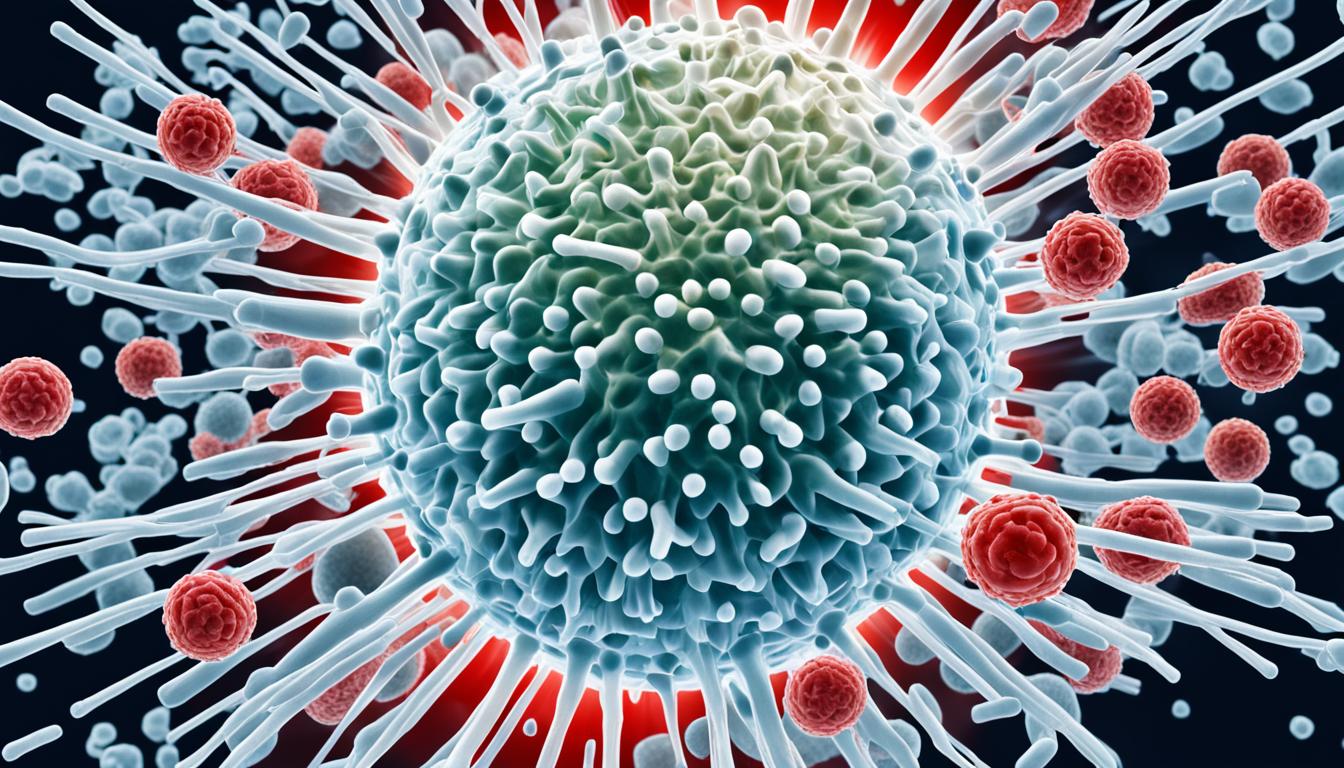Influenza, or the flu, is a very contagious respiratory disease. It’s caused by the influenza virus and affects people all over the globe. Every year, it can lead to serious sicknesses and even death. Knowing about its symptoms, causes, diagnosis, and how to treat it is key to stopping its spread and fighting the illness.
Flu symptoms often include fever, chills, and muscle pains. People might also cough a lot or have a sore throat. These signs can be mild or severe, making life tough for those who have them. The virus spreads quickly through the air when someone sneezes or coughs.
Doctors diagnose the flu using a Polymerase Chain Reaction (PCR) test. This test can tell which type of flu virus a person has, like influenza A or B. It’s important for getting the right treatment.
Getting a flu shot each year is the best way to avoid getting sick. This shot is for everyone over 6 months old. It protects you from the most common flu viruses. It can also make the flu less severe if you do catch it.
In very serious flu cases, complications like pneumonia can happen. Scientists are looking at using stem cell therapy to help treat these patients. This kind of treatment uses stem cells to help the body repair itself. It could make a big difference for those with bad flu symptoms.
Key Takeaways:
- Flu is a highly contagious respiratory illness caused by the influenza virus.
- Symptoms of flu include fever, chills, muscle pains, coughing, and a sore throat.
- PCR tests can accurately diagnose different strains of the influenza virus.
- An annual flu vaccine is the best preventive measure against the flu.
- Stem cell therapy is being explored as a potential treatment for severe flu cases.
Types of influenza viruses and transmission
Influenza viruses fall into three types: A, B, and C. Each has unique nucleoproteins and matrix proteins. In humans, the most common cause of flu is Influenza A.
Flu spreads through close contact with someone who’s infected. If they cough or sneeze, they release virus-laden droplets. When others inhale these droplets, they can catch the flu too. This makes the flu spread quickly.
The Influenza A virus has special surface proteins, hemagglutinin (H) and neuraminidase (NA). They help the virus stick to and leave host cells. Our immune system targets these proteins to stop the virus.
The flu virus changes in two ways, called antigenic drift and shift. Drift is small changes to the virus’s surface proteins. These keep the flu vaccine team on their toes, updating the vaccine often. This helps it fight the new strains.
Antigenic shift is rare but big, creating new H and/or NA antigens. If a completely new strain comes about, it could spread quickly and cause a pandemic.
Comparison of Influenza A, Influenza B, and Influenza C
| Type of Influenza | Main Hosts | Disease Severity | Prevalence |
|---|---|---|---|
| Influenza A | Humans, animals (e.g., birds, pigs) | Variable, can cause severe illness | Most common type |
| Influenza B | Humans | Usually milder symptoms | Less common than Influenza A |
| Influenza C | Humans, pigs, dogs | Generally mild respiratory illness | Less prevalent than Influenza A and B |
Knowing about flu viruses and how they spread helps us protect against it. Being informed and keeping good hygiene are key. This way, we can lower the risk of catching the flu and help stop its spread.
Prevention and treatment of influenza
Influenza, or the flu, is diagnosed using a PCR test. This test finds the virus’s genetic material. It helps doctors pinpoint the flu type for proper treatment.
For mild cases, rest and over-the-counter medicines can help. They ease symptoms like fever and cough. But, if you are at a higher risk or have severe symptoms, you might need antiviral drugs. These can shorten your sickness and prevent further problems.
The best way to avoid the flu is to get the flu shot. The vaccine teaches your body to fight off the flu strains. Because the flu virus can change each year, it’s crucial to get vaccinated annually.
There’s also exciting research into using stem cells to treat severe flu cases. But, this is still being studied. Remember, the flu can lead to serious issues like pneumonia. Seek help if you feel your symptoms are getting worse.
Good hygiene is key in preventing the flu’s spread. This means washing your hands often and staying away from sick people. Also, cover your mouth and nose when you cough or sneeze. These simple steps go a long way in staying healthy.
By taking these steps, you protect yourself and others from the flu’s effects. Prevention and early treatment are crucial.

